文章
Dummer. ゛☀
2017年07月16日

Family - Fabaceae
Flowering - July - October.

Habitat - Acid soils of open woods, glades, and dry open ground.

Origin - Native to U.S.
Other info. - This species can be found in the southern half of Missouri. The plant is easy to identify becasue of its tall, erect, hirsute stems, its white flowers, and its rounded leaves. This is a common bean species of the dry, cherty slopes of the Ozarks.
Flowering - July - October.

Habitat - Acid soils of open woods, glades, and dry open ground.

Origin - Native to U.S.
Other info. - This species can be found in the southern half of Missouri. The plant is easy to identify becasue of its tall, erect, hirsute stems, its white flowers, and its rounded leaves. This is a common bean species of the dry, cherty slopes of the Ozarks.

0
0
文章
Dummer. ゛☀
2017年07月16日

Family - Fabaceae
Flowering - July - October.

Habitat - Upland and bottomland prairies, glades, loess hills, streambanks, upland woods, thickets, railroads, roadsides.

Origin - Native to U.S.
Other info. - This attractive species can be found throughout Missouri. The plant is easy to identify becasue of its hairy stems, thin leaflets, and capitate heads of flowers and fruits.
The plant is very nutritious for herbivore mammals.
Steyermark breaks the species into many varieties but these are not valid.
Flowering - July - October.

Habitat - Upland and bottomland prairies, glades, loess hills, streambanks, upland woods, thickets, railroads, roadsides.

Origin - Native to U.S.
Other info. - This attractive species can be found throughout Missouri. The plant is easy to identify becasue of its hairy stems, thin leaflets, and capitate heads of flowers and fruits.
The plant is very nutritious for herbivore mammals.

Steyermark breaks the species into many varieties but these are not valid.
0
0
文章
Dummer. ゛☀
2017年07月16日

Family - Urticaceae
Flowering - May - September.
Habitat - Bottomland forests, wet woods, floodplain forests.
Origin - Native to U.S.
Other info. - This species can be found throughout Missouri. The plant can be found in large quantities in bottomland forests and river floodplain forests. In Missouri, the plant is nearly always associated with other floodplain species like Elymus virginicus and Viola striata.
L. canadensis can be identified by its alternate, long-petiolate leaves, and painful stinging hairs. All parts of the plant contain the stinging hairs. The itching pain from the hairs lasts only a few minutes.
Flowering - May - September.

Habitat - Bottomland forests, wet woods, floodplain forests.

Origin - Native to U.S.
Other info. - This species can be found throughout Missouri. The plant can be found in large quantities in bottomland forests and river floodplain forests. In Missouri, the plant is nearly always associated with other floodplain species like Elymus virginicus and Viola striata.

L. canadensis can be identified by its alternate, long-petiolate leaves, and painful stinging hairs. All parts of the plant contain the stinging hairs. The itching pain from the hairs lasts only a few minutes.
0
0
文章
Dummer. ゛☀
2017年07月15日

Family - Asteraceae
Ray flowers - Absent.
Flowering - July - October.
Habitat - Limestone ledges of bluffs, rocky limestone talus, rocky wooded slopes.
Origin - Native to U.S.
Other info. - This species can be found throughout Missouri. The plant is extremely variable and sometimes hard to differentiate from another genus, Eupatorium.
Kuhnia can often have opposite leaves as well as alternate leaves. The stems can be hairy or glabrous. The leaves can be thin or elliptic. Steyermark breaks the species into three vareties. None are valid.
The plant can typically be identified by its thin leaves, thin stems, thin phyllaries, and white flowers.
Ray flowers - Absent.
Flowering - July - October.

Habitat - Limestone ledges of bluffs, rocky limestone talus, rocky wooded slopes.

Origin - Native to U.S.
Other info. - This species can be found throughout Missouri. The plant is extremely variable and sometimes hard to differentiate from another genus, Eupatorium.
Kuhnia can often have opposite leaves as well as alternate leaves. The stems can be hairy or glabrous. The leaves can be thin or elliptic. Steyermark breaks the species into three vareties. None are valid.

The plant can typically be identified by its thin leaves, thin stems, thin phyllaries, and white flowers.
0
0
文章
Dummer. ゛☀
2017年07月15日

Family - Balsaminaceae
Flowering - July - September.
Habitat - Cultivated an escaped to moist waste ground, persistent around old homesites.
Origin - Native to Asia.
Other info. - This striking species is rare in the wilds of Missouri. It has only been reported growing wild in one location from Dunklin County. The plant can flowers of various colors (depending on cultivar).
The stems of this plant are subsucculent and the mucilage has been used medicinally to treat a variety of ailments ranging from burns to constipation.
Flowering - July - September.

Habitat - Cultivated an escaped to moist waste ground, persistent around old homesites.

Origin - Native to Asia.
Other info. - This striking species is rare in the wilds of Missouri. It has only been reported growing wild in one location from Dunklin County. The plant can flowers of various colors (depending on cultivar).

The stems of this plant are subsucculent and the mucilage has been used medicinally to treat a variety of ailments ranging from burns to constipation.
0
0
文章
Dummer. ゛☀
2017年07月15日

Family - Orchidaceae
Flowering - August - September.
Habitat - Coniferous woods with acidic soils, ravines.
Origin - Native to U.S.
Other info. - This striking species can be found in just a handful of eastern Ozark counties in Missouri. The plant is easy to ID in the field because of its neat basal leaves. No other species in Missouri has leaves which resemble it. G. pubescens is much more populous in more eastern states and is one of the most common orchids seen.
Flowering - August - September.

Habitat - Coniferous woods with acidic soils, ravines.

Origin - Native to U.S.
Other info. - This striking species can be found in just a handful of eastern Ozark counties in Missouri. The plant is easy to ID in the field because of its neat basal leaves. No other species in Missouri has leaves which resemble it. G. pubescens is much more populous in more eastern states and is one of the most common orchids seen.

1
0
文章
Dummer. ゛☀
2017年07月15日

Family - Onagraceae
Flowering - June - October.
Habitat - Prairies, glades, thickets, dry woods, gravel bars, alluvial soils, roadsides, railroads.
Origin - Native to U.S.
Other info. - This weedy species can be found throughout Missouri and is quite common, except in the extreme southeastern corner of the state. The plant is easy to identify in the field because of its distinctive flowers. Vegetatively the plant can be hard to tell from other members of the family.
Flowering - June - October.

Habitat - Prairies, glades, thickets, dry woods, gravel bars, alluvial soils, roadsides, railroads.

Origin - Native to U.S.
Other info. - This weedy species can be found throughout Missouri and is quite common, except in the extreme southeastern corner of the state. The plant is easy to identify in the field because of its distinctive flowers. Vegetatively the plant can be hard to tell from other members of the family.

0
0
文章
Dummer. ゛☀
2017年07月15日

Family - Asteraceae
Flowering - April - June.

Habitat - Rocky open woods, thickets, stream edges.

Origin - Native to U.S.
Other info. - This species can be found throughout much of Missouri but is apparently absent from the west-central and northwest portions of the state. The plant is probably the easiest of the Erigeron species to ID in Missouri because of its densely hairy stems and its big flower heads. The plant spreads by stolons and often forms little colonies.
The species epithet - "pulchellus" means "pretty."
Flowering - April - June.

Habitat - Rocky open woods, thickets, stream edges.

Origin - Native to U.S.
Other info. - This species can be found throughout much of Missouri but is apparently absent from the west-central and northwest portions of the state. The plant is probably the easiest of the Erigeron species to ID in Missouri because of its densely hairy stems and its big flower heads. The plant spreads by stolons and often forms little colonies.

The species epithet - "pulchellus" means "pretty."
0
0
文章
Dummer. ゛☀
2017年07月15日

Family - Convolvulaceae
Flowering - April - October.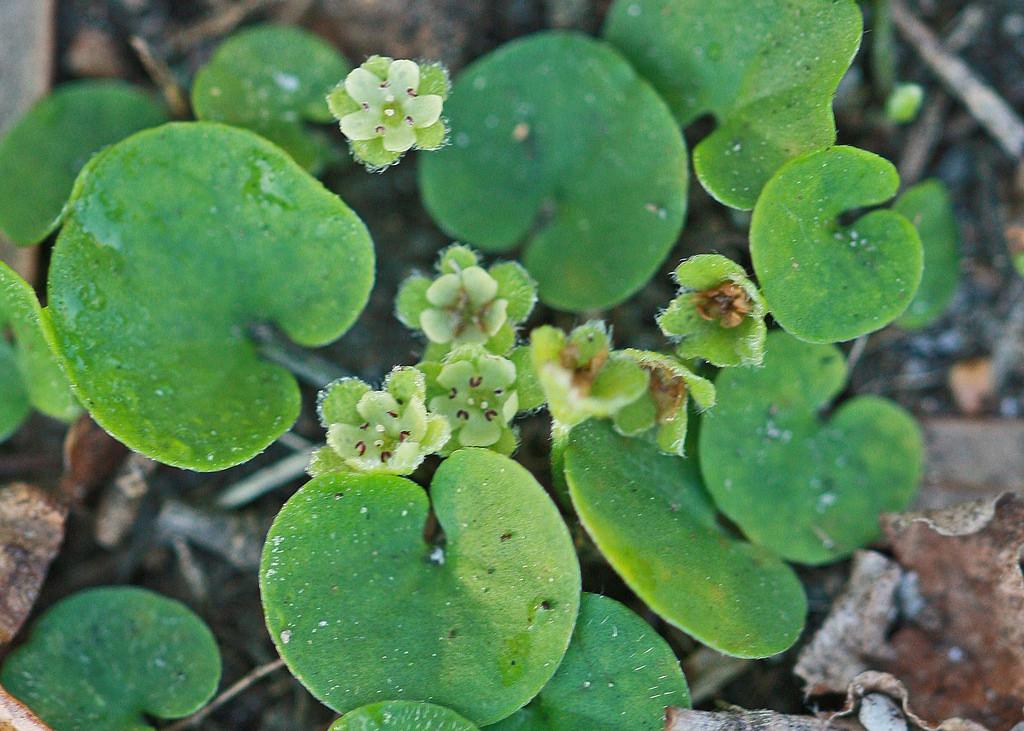
Habitat - Lawns, fields, roadsides.
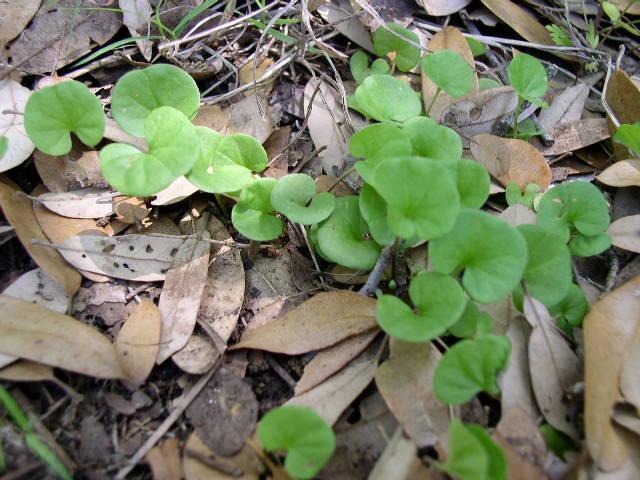
Origin - Native to U.S.
Other info. - This weedy little species is a fairly new addition to the Missouri flora and has only been reported from two southern Missouri counties. The plant is much more common in the southeastern U.S.
This species is easy to identify becasue of its creeping stems, reniform leaves, and small flowers.
Flowering - April - October.

Habitat - Lawns, fields, roadsides.

Origin - Native to U.S.
Other info. - This weedy little species is a fairly new addition to the Missouri flora and has only been reported from two southern Missouri counties. The plant is much more common in the southeastern U.S.
This species is easy to identify becasue of its creeping stems, reniform leaves, and small flowers.

0
0
求助
Ueca
2017年07月15日

What are these succulent species? I am especially interested in the Gasteria-like plants.
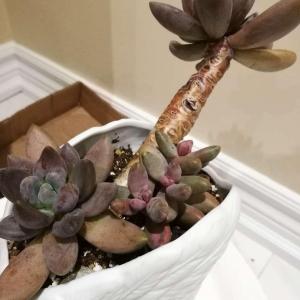
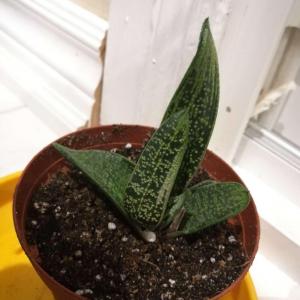
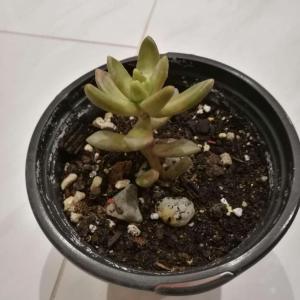

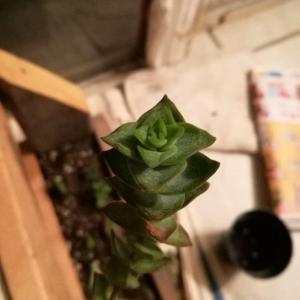

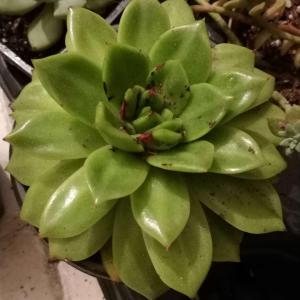
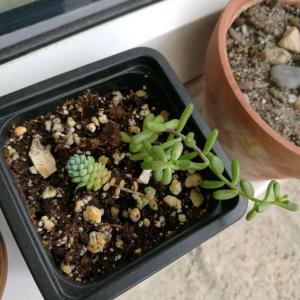
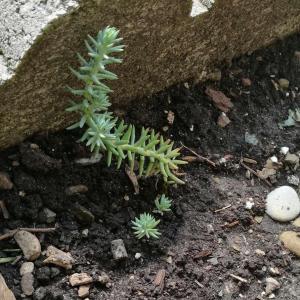









1
0
Abby Gill:The first and third are probably pachyphytum, the second one maybe haworthia, the fourth one echeveria lola, the seventh a type of echeveria, and the last one some kind of sedum. I'm not 100% sure though.
meriunkat:the second picture on the last row had a small sedum Morganianum "donkey tail"
文章
Dummer. ゛☀
2017年07月14日

Family - Asteraceae
Ray flowers - Mostly absent.
Flowering - May - September.
Habitat - Fields, pastures, prairies, rocky open ground, waste ground, disturbed sites, roadsides, railroads.
Origin - Native to U.S.
Other info. - This small, spreading species can be found throughout Missouri. The plant is easy to ID in the field because of its lax growth habit, silvery-grey appearance, and small flowerheads. This species has a bitter taste and is avoided by livestock. It is considered a weed by most.
Ray flowers - Mostly absent.

Flowering - May - September.

Habitat - Fields, pastures, prairies, rocky open ground, waste ground, disturbed sites, roadsides, railroads.

Origin - Native to U.S.
Other info. - This small, spreading species can be found throughout Missouri. The plant is easy to ID in the field because of its lax growth habit, silvery-grey appearance, and small flowerheads. This species has a bitter taste and is avoided by livestock. It is considered a weed by most.
0
0
文章
Dummer. ゛☀
2017年07月14日

Family - Asteraceae
Disk flowers - No info. yet.
Flowering - June - November.
Habitat - Fields, disturbed sites, waste ground, roadsides, railroads.
Origin - Native to U.S.
Other info. - This weedy species can be found throughout Missouri. It spreads rapidly and is one of the most common plants in the state. The more mature plants are apically branched but the plant can flower when quite small and unbranched.
The plant was traditionally used to treat many ailments such as diarrhea, kidney stones, diabetes, and nosebleeds. Many people are allergic to its pollen and can get a reaction just by handling the plant. IT is one of the leading causes of fall allergies. Livestock animals seem to ignore the plant because of its bitter taste.
Disk flowers - No info. yet.
Flowering - June - November.

Habitat - Fields, disturbed sites, waste ground, roadsides, railroads.

Origin - Native to U.S.
Other info. - This weedy species can be found throughout Missouri. It spreads rapidly and is one of the most common plants in the state. The more mature plants are apically branched but the plant can flower when quite small and unbranched.
The plant was traditionally used to treat many ailments such as diarrhea, kidney stones, diabetes, and nosebleeds. Many people are allergic to its pollen and can get a reaction just by handling the plant. IT is one of the leading causes of fall allergies. Livestock animals seem to ignore the plant because of its bitter taste.
0
0
文章
Dummer. ゛☀
2017年07月14日

Family - Asteraceae
Flowering - April - August.
Habitat - Rocky open woods, prairies, glades.

Origin - Native to U.S.
Other info. - This tiny species can be found in just a handful of southwestern Missouri counties. It is easily overlooked in the field because of its small size but is easily identified as nothing else in its family resembles it. The thin, wiry stems and scale-like leaves are good characters to look for. A similar looking species which could occur with this one is Arenaria patula Michx. but this latter species has opposite leaves and flowers with 4 petals. Chaetopappa has alternate leaves and a composite flower.

Flowering - April - August.
Habitat - Rocky open woods, prairies, glades.


Origin - Native to U.S.
Other info. - This tiny species can be found in just a handful of southwestern Missouri counties. It is easily overlooked in the field because of its small size but is easily identified as nothing else in its family resembles it. The thin, wiry stems and scale-like leaves are good characters to look for. A similar looking species which could occur with this one is Arenaria patula Michx. but this latter species has opposite leaves and flowers with 4 petals. Chaetopappa has alternate leaves and a composite flower.
0
0
文章
Dummer. ゛☀
2017年07月13日

Family - Rosaceae
Flowering - May - July.
Habitat - Bluffs, wooded slopes, rocky and moist woodlands, ravines.
Origin - Native to U.S.
Other info. - This attractive species can be found in the southeastern half of Missouri but is mostly absent from the bootheel. The plant is easy to identify because of its big sprays of whitish flowers that quickly become tan when drying. The large, compound leaves are also diagnostic.
Aruncus was used by natives as a tea to reduce bleeding after childbirth. The same tea was also used as a soak for tired, swollen feet. Steyermark reported that the plant grows well from seed and does well in a garden setting. It would make a striking cultivated plant.
Flowering - May - July.

Habitat - Bluffs, wooded slopes, rocky and moist woodlands, ravines.

Origin - Native to U.S.
Other info. - This attractive species can be found in the southeastern half of Missouri but is mostly absent from the bootheel. The plant is easy to identify because of its big sprays of whitish flowers that quickly become tan when drying. The large, compound leaves are also diagnostic.
Aruncus was used by natives as a tea to reduce bleeding after childbirth. The same tea was also used as a soak for tired, swollen feet. Steyermark reported that the plant grows well from seed and does well in a garden setting. It would make a striking cultivated plant.
0
0
文章
Dummer. ゛☀
2017年07月13日

Family - Apiaceae
Flowering - May - July.
Habitat - Dry rocky woods, along streams, rich woods, wet prairies, shaded bluffs, swamps.
Origin - Native to U.S.
Other info. - This toxic species is found in the Ozark region of Missouri. At first, it can be confused with other plants in the same family but can be distinguished by its serrate leaflets (which are hairy abaxially), mostly flat inflorescences, and hairy peduncles which support the primary rays of the inflorescences.
Flowering - May - July.

Habitat - Dry rocky woods, along streams, rich woods, wet prairies, shaded bluffs, swamps.

Origin - Native to U.S.
Other info. - This toxic species is found in the Ozark region of Missouri. At first, it can be confused with other plants in the same family but can be distinguished by its serrate leaflets (which are hairy abaxially), mostly flat inflorescences, and hairy peduncles which support the primary rays of the inflorescences.
0
0




